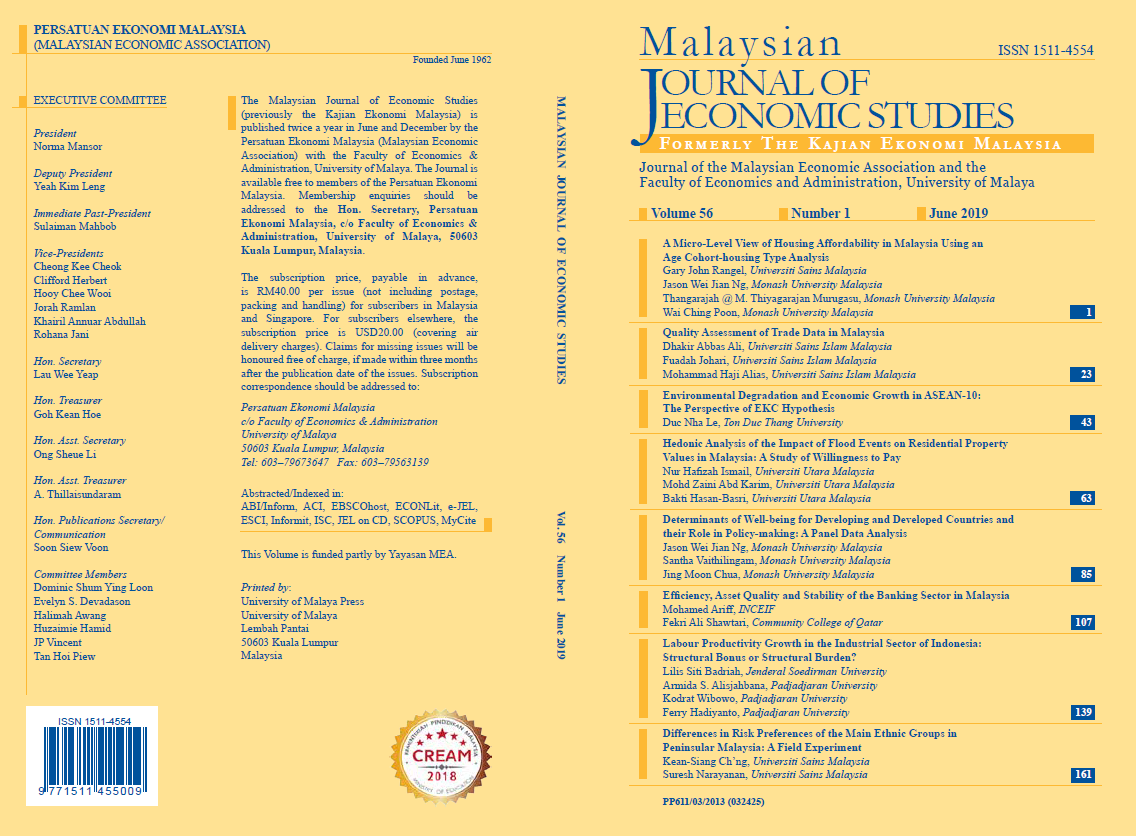A Micro-Level View of Housing Affordability in Malaysia Using an Age Cohort-housing Type Analysis
DOI:
https://doi.org/10.22452/MJES.vol56no1.1Keywords:
Age cohort, cubic spline, housing affordability, housing types, information asymmetry, MalaysiaAbstract
Housing affordability has been an important issue for both developed and developing countries. Prior literature has used the price-income ratio as the main standard to assess housing affordability with the median disposable household income of the sample population commonly used. As such, conclusions drawn from macro-level analyses lack practical policy considerations. This paper attempts to address the problem in greater detail by considering age cohorts, income percentiles and different house types. The results show that for those aged 20-24 and 60-64, housing is severely unaffordable across all house types, except for the 75th income percentile group. The most expensive – semi-detached and detached housing types – remain unaffordable to all income and age groups, except for the 75th income percentile group aged 30 and above. Terrace and high rise housing types are the most affordable across each income percentile. Based on the results, we extend the housing affordability literature through recommendation of several policy measures that may ameliorate the affordability conundrum.

